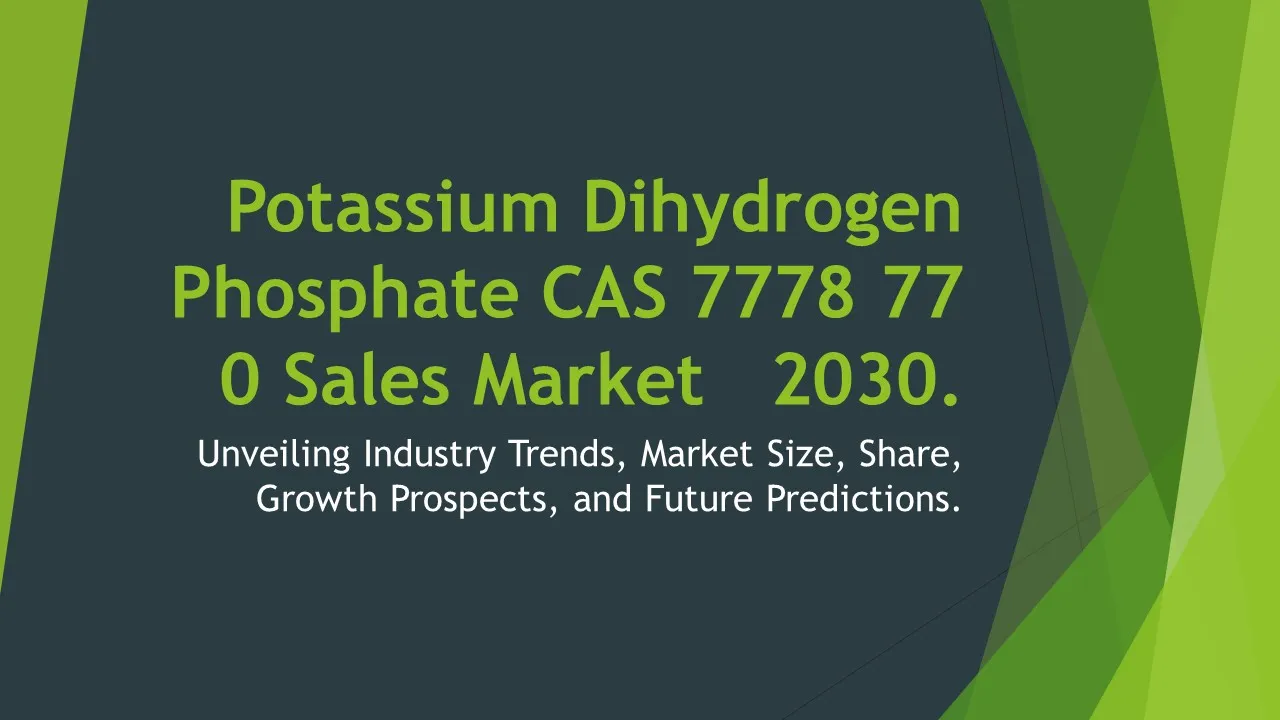Ethyl Acrylate Ester Sales
Ethyl Acrylate Ester Market Segments - by Product Type (Standard Ethyl Acrylate Ester, High Purity Ethyl Acrylate Ester, Low VOC Ethyl Acrylate Ester, Bio-based Ethyl Acrylate Ester, Customized Ethyl Acrylate Ester), Application (Paints & Coatings, Adhesives & Sealants, Plastics, Textiles, Others), Distribution Channel (Direct Sales, Distributor Sales, Online Retail), Ingredient Type (Ethyl Acrylate, Methacrylic Acid, Ethylene, Others), and Region (North America, Europe, Asia Pacific, Latin America, Middle East & Africa) - Global Industry Analysis, Growth, Share, Size, Trends, and Forecast 2025-2035
- Report Preview
- Table Of Content
- Segments
- Methodology
Ethyl Acrylate Ester Sales Market Outlook
The global Ethyl Acrylate Ester market is projected to reach approximately USD 1.7 billion by 2035, growing at a CAGR of around 5.2% from 2025 to 2035. This growth is driven by the increasing applications of ethyl acrylate in various industries such as paints, coatings, adhesives, and textiles, which have become vital components in construction and manufacturing. The rising demand for environmentally friendly products has also spurred growth in the bio-based ethyl acrylate segment, catering to sustainability trends across multiple sectors. Furthermore, advancements in polymer technology are leading to enhanced performance characteristics of products made with ethyl acrylate, thereby widening its application scope. The continuous growth in the automotive and construction sectors, especially in emerging markets, also contributes significantly to the increasing demand for ethyl acrylate esters.
Growth Factor of the Market
Several factors are contributing to the growth of the Ethyl Acrylate Ester market. The increasing demand for high-performance coatings and adhesives in the construction and automotive industries underscores the necessity for durable materials, which in turn drives the consumption of ethyl acrylate. Additionally, the regulatory pressure for reducing volatile organic compounds (VOCs) in products has led manufacturers to innovate formulations that utilize low VOC ethyl acrylate, aligning with environmental standards. The rise of the textile industry, particularly in Asia-Pacific, has also created a substantial market for ethyl acrylate esters, as they are used in textiles for their flexibility and adhesion properties. Moreover, the trend towards sustainable practices is boosting the demand for bio-based ethyl acrylate, as consumers become more environmentally conscious. The evolving landscape of e-commerce distribution channels is also making it easier for manufacturers to reach a broader customer base, thus expanding the market reach.
Key Highlights of the Market
- The global Ethyl Acrylate Ester market is expected to grow at a CAGR of 5.2% from 2025 to 2035.
- Increased demand for low VOC and bio-based ethyl acrylate is becoming a market trend driven by sustainability.
- The paints and coatings industry is the largest application segment for ethyl acrylate esters.
- Asia Pacific is anticipated to dominate the market, driven by rapid industrialization and urbanization.
- Direct sales continue to be the most preferred distribution channel in the ethyl acrylate esters market.
By Product Type
Standard Ethyl Acrylate Ester:
Standard ethyl acrylate esters are widely utilized due to their balanced properties, including good adhesion, flexibility, and resistance to environmental conditions. These characteristics make them an ideal choice for various applications, particularly in paints and coatings, where durability and finish quality are paramount. As industries increasingly focus on performance and sustainability, standard ethyl acrylate esters are likely to remain a staple in formulations. Their versatility allows them to be used in a range of products, potentially leading to increased consumption in the coming years.
High Purity Ethyl Acrylate Ester:
High purity ethyl acrylate esters are essential for applications requiring stringent quality and performance specifications, such as in the pharmaceutical and cosmetic industries. The demand for high purity grades has been on the rise as manufacturers look to develop products that meet high regulatory standards. This product type is characterized by its ability to provide consistent quality and reliable performance, thereby enhancing the overall efficacy of the end products. As industries evolve and focus on specialized applications, the market for high purity ethyl acrylate is expected to expand significantly.
Low VOC Ethyl Acrylate Ester:
Low VOC ethyl acrylate esters are gaining traction due to increasing environmental regulations and consumer demand for sustainable products. They provide manufacturers with a compliant alternative that reduces harmful emissions during the application and curing processes. These esters are particularly relevant in the coatings and adhesives sectors, where VOC regulations are stringent. With a growing emphasis on green chemistry, the low VOC segment is poised to capture a larger share of the market as more companies seek to enhance their sustainability profiles.
Bio-based Ethyl Acrylate Ester:
Bio-based ethyl acrylate esters represent a significant shift towards sustainable manufacturing practices. These esters are derived from renewable resources, making them attractive to eco-conscious businesses and consumers. The growing trend towards sustainable and bio-friendly materials is driving demand for bio-based alternatives across various applications, including paints, coatings, and adhesives. As awareness around environmental issues continues to rise, the bio-based segment is expected to grow rapidly, offering opportunities for innovation and growth in the industry.
Customized Ethyl Acrylate Ester:
Customized ethyl acrylate esters offer tailored solutions to meet specific performance requirements of various industries. This flexibility allows manufacturers to develop unique formulations that enhance product performance in specific applications, whether it be for improved adhesion, durability, or chemical resistance. The increasing demand for specialized products is driving the customization trend, and businesses are likely to invest in this segment to differentiate their offerings. This market segment is characterized by its potential for growth, as more companies seek to innovate and cater to niche markets with specialized needs.
By Application
Paints & Coatings:
The paints and coatings industry is a primary application of ethyl acrylate esters, as these materials offer essential properties such as durability, flexibility, and adhesion. Ethyl acrylate esters are utilized in various formulations, including emulsions, varnishes, and protective coatings. With the growing trend towards higher-quality coatings that meet environmental regulations, the demand for ethyl acrylate in this sector is expected to grow significantly. Advances in technology are also leading to the development of innovative products that enhance performance characteristics, further fueling market growth.
Adhesives & Sealants:
Ethyl acrylate esters play a crucial role in the adhesives and sealants industry, where they are valued for their strong bonding properties and versatility. These materials are used in a variety of applications, including construction, automotive, and electronics. The increasing demand for high-performance adhesives that can withstand harsh conditions is driving the growth of this segment. As industries continue to evolve and require strong, reliable bonding solutions, the market for ethyl acrylate-based adhesives is expected to expand rapidly, presenting opportunities for manufacturers to innovate and capture market share.
Plastics:
In the plastics sector, ethyl acrylate esters are utilized in the production of various polymeric materials, enhancing their properties such as toughness, flexibility, and UV resistance. This application has seen a steady increase, driven by the growing demand for high-performance plastics in diverse industries such as automotive, consumer goods, and packaging. The versatility of ethyl acrylate in formulating different plastic materials makes it a valuable ingredient. With the ongoing advancements in material science and the push towards lightweight and durable materials, the use of ethyl acrylate in plastics is expected to gain further traction.
Textiles:
Ethyl acrylate esters are also widely used in the textile industry for their adhesion properties and ability to enhance fabric characteristics. Applications range from textile coatings to adhesion in composite materials. The increasing consumer preference for high-quality and durable fabrics is driving the adoption of ethyl acrylate in textile formulations. Moreover, the trend towards sustainable textiles is likely to influence the market positively, as manufacturers seek eco-friendly solutions that do not compromise on quality. As fashion and functionality merge in the textile sector, the role of ethyl acrylate is expected to grow.
Others:
Other applications of ethyl acrylate esters include their use in inks, adhesives, and various industrial applications. These products are utilized in creating formulations that require specific performance characteristics, such as rapid drying times and resistance to environmental factors. The diversification of applications beyond traditional uses is contributing to the overall growth of the ethyl acrylate market. As industries explore new opportunities for ethyl acrylate esters, the 'others' category is likely to see continued expansion, driven by innovation and the development of specialized products.
By Distribution Channel
Direct Sales:
Direct sales remain one of the most effective channels for distributing ethyl acrylate esters, allowing manufacturers to connect directly with their customers. This approach often results in better communication regarding product specifications, performance, and customization options. Direct sales also facilitate the establishment of strong relationships with clients, enhancing customer loyalty and satisfaction. As manufacturers prioritize service quality and personalized interactions, the direct sales segment will likely experience steady growth, ensuring that customers receive tailored solutions to meet their needs.
Distributor Sales:
Distributor sales are a vital channel in the ethyl acrylate ester market, providing manufacturers with broader access to various markets and customer segments. Distributors often have established relationships and networks that can help manufacturers navigate market dynamics and reach various industries effectively. They can provide logistical support and localized knowledge, making them essential partners in the supply chain. As demand continues to grow, especially in emerging markets, the distributor sales channel is expected to expand, providing manufacturers with the flexibility to adjust their strategies according to market needs.
Online Retail:
Online retail is an increasingly popular distribution channel for ethyl acrylate esters, offering convenience and accessibility to customers worldwide. The rise of e-commerce platforms has transformed how manufacturers approach sales, allowing them to reach a broader audience without the geographical constraints of traditional distribution methods. As businesses embrace digital transformation, the online retail segment is set to grow, providing customers with a streamlined purchasing experience. Furthermore, the trend towards online procurement is expected to accelerate, particularly among smaller businesses that seek competitive pricing and convenient access to products.
By Ingredient Type
Ethyl Acrylate:
Ethyl acrylate itself is the primary ingredient in ethyl acrylate esters, valued for its excellent polymerization properties and versatility. It serves as a foundational building block for a wide range of applications, including adhesives, coatings, and plastics. The demand for ethyl acrylate is steadily increasing due to its essential role in producing high-performance materials. As industries continue to seek innovative solutions that offer exceptional durability and performance characteristics, the market for ethyl acrylate is expected to grow, driven by its application across various sectors.
Methacrylic Acid:
Methacrylic acid is another important ingredient in formulating ethyl acrylate esters, contributing to enhanced properties such as thermal stability and adhesion. This ingredient is particularly relevant in applications requiring more rigid and durable materials, such as automotive and construction. The increasing demand for high-performance products is driving the growth of methacrylic acid in the formulation of ethyl acrylate esters. As industries continue to evolve and demand more specialized materials, the market for methacrylic acid is anticipated to expand significantly.
Ethylene:
Ethylene is utilized in the production of ethyl acrylate esters, contributing to their overall performance and stability. As a key ingredient, ethylene enhances the chemical properties of the final product, making it suitable for various applications across industries. The growth of the ethylene segment is closely tied to developments in the petrochemical industry, driving innovations in polymer production. As manufacturers continue to seek high-quality materials that meet performance standards, the role of ethylene in ethyl acrylate esters is expected to become increasingly significant.
Others:
Other ingredient types in the ethyl acrylate ester market include various additives and modifiers that enhance the performance and usability of the final products. These additional ingredients may include stabilizers, plasticizers, and cross-linking agents that improve the material's mechanical properties and shelf life. The demand for these ingredients is tied to the overall growth of the ethyl acrylate ester market, as manufacturers strive to create formulations that meet specific performance standards. As innovation continues, the market for these additional ingredient types is expected to expand, catering to the evolving needs of various industries.
By Region
The North American region is a significant market for ethyl acrylate esters, driven by the robust demand from the paints and coatings and adhesives sectors. The market is characterized by technological advancements and a strong emphasis on research and development, leading to innovative applications of ethyl acrylate. The U.S. accounts for a substantial market share, attributed to the presence of key market players and a thriving manufacturing industry. The growth in this region is projected to be around 4.5% CAGR from 2025 to 2035, supported by ongoing investments in infrastructure and construction projects.
In Europe, the ethyl acrylate ester market is also witnessing significant growth, fueled by increasing regulatory emphasis on low VOC products and sustainable materials. The region is home to numerous manufacturers focusing on eco-friendly formulations, which is driving the adoption of bio-based and low VOC ethyl acrylate esters. Germany and the U.K. are among the leading countries in the European market, showcasing strong demand from the automotive and construction industries. The overall market growth in this region is expected to be around 5% CAGR, reflecting the increasing consumer preference for environmentally sustainable products.
Opportunities
The ethyl acrylate ester market presents numerous opportunities for growth, particularly in response to the rising demand for sustainable and eco-friendly materials. As industries increasingly prioritize environmental responsibility, the adoption of bio-based and low VOC ethyl acrylate esters is set to accelerate. This shift not only aligns with regulatory compliance but also meets consumer expectations for greener products. Manufacturers have the opportunity to invest in research and development to innovate new formulations that cater to these sustainable trends, which could lead to increased market penetration and competitive advantage. Moreover, expanding into emerging markets, particularly in Asia-Pacific and Latin America, presents untapped potential for growth as these regions witness rapid industrialization and urban development.
Another significant opportunity lies in the technological advancements within the polymer industry, which enable the development of high-performance materials that utilize ethyl acrylate esters. The continuous innovation in applications such as smart coatings, advanced adhesives, and high-strength plastics can drive demand in both established and new markets. Companies that invest in developing cutting-edge applications will not only enhance their product offerings but also position themselves as leaders in the market. Collaboration with research institutions and industry partners to explore new applications and improve existing formulations could further enhance growth prospects in the ethyl acrylate ester market.
Threats
Despite the promising growth opportunities in the ethyl acrylate ester market, several threats could potentially hinder progress. One significant risk is the volatility of raw material prices, which can impact production costs and profit margins for manufacturers. Fluctuations in the availability and cost of petrochemical derivatives, from which ethyl acrylate is derived, can lead to increased operational challenges and unpredictability in pricing strategies. Additionally, stringent regulatory frameworks surrounding chemical production and environmental compliance could pose challenges for manufacturers, particularly those who are slower to adapt to changing standards. Non-compliance could result in penalties, product recalls, and loss of market reputation, thereby threatening ongoing business operations.
Another notable threat is the increasing competition from alternative materials and synthetic polymers that serve similar purposes as ethyl acrylate esters. As technology advances, new materials may emerge that offer enhanced performance characteristics or lower production costs. This competition could potentially erode market share for ethyl acrylate esters unless manufacturers innovate and articulate their unique value proposition effectively. Furthermore, the ongoing economic fluctuations, which can impact industrial spending, may also threaten market stability and growth. Companies operating in this space must remain agile and responsive to market dynamics to mitigate these threats and sustain growth.
Competitor Outlook
- BASF SE
- Dow Chemical Company
- Evonik Industries AG
- Huntsman Corporation
- LG Chem Ltd.
- Mitsubishi Chemical Corporation
- Arkema S.A.
- Rohm and Haas Company (a subsidiary of Dow)
- Wacker Chemie AG
- Shin-Etsu Chemical Co., Ltd.
- China National Petroleum Corporation (CNPC)
- Formosa Plastics Corporation
- Eastman Chemical Company
- Hexion Inc.
- Albermarle Corporation
The competitive landscape of the ethyl acrylate ester market is characterized by a mix of large multinational corporations and smaller regional players. Major companies are continuously investing in research and development to innovate and enhance their product offerings, aiming to capture a larger market share. Additionally, strategic partnerships and collaborations among companies are common, enabling them to leverage complementary strengths and expand their reach in various regions. The market is also witnessing an increasing focus on sustainability, leading to the development of eco-friendly product lines, which could influence competitive dynamics in the future. As companies adapt to changing consumer preferences and regulatory environments, their ability to provide innovative and sustainable solutions will become crucial to maintaining a competitive edge.
BASF SE is one of the leading players in the ethyl acrylate ester market, known for its extensive product portfolio and commitment to sustainable solutions. The company invests heavily in research and development, focusing on creating high-performance materials that meet environmental regulations. Their strong global presence and diverse customer base allow them to maintain leadership in the market while exploring new applications for ethyl acrylate esters across various industries. Dow Chemical Company is another key player, renowned for its innovative approaches and wide-ranging applications of ethyl acrylate esters in adhesives, coatings, and plastics. Dow's commitment to sustainability is reflected in its development of low VOC and bio-based solutions, positioning the company as a forward-thinking leader in the industry.
Evonik Industries AG also plays a significant role in the ethyl acrylate ester market, focusing on specialty chemicals that cater to high-value applications. The company emphasizes customer collaboration to develop tailored solutions, enabling businesses to enhance performance and meet specific product requirements. With their focus on innovation and sustainability, Evonik is well-positioned to capitalize on emerging opportunities in the market. Similarly, Huntsman Corporation is recognized for its diverse range of applications for ethyl acrylate esters, particularly in the adhesives and coatings sectors. The company's commitment to sustainability and its global reach enable it to respond effectively to market demands and regulatory changes.
1 Appendix
- 1.1 List of Tables
- 1.2 List of Figures
2 Introduction
- 2.1 Market Definition
- 2.2 Scope of the Report
- 2.3 Study Assumptions
- 2.4 Base Currency & Forecast Periods
3 Market Dynamics
- 3.1 Market Growth Factors
- 3.2 Economic & Global Events
- 3.3 Innovation Trends
- 3.4 Supply Chain Analysis
4 Consumer Behavior
- 4.1 Market Trends
- 4.2 Pricing Analysis
- 4.3 Buyer Insights
5 Key Player Profiles
- 5.1 BASF SE
- 5.1.1 Business Overview
- 5.1.2 Products & Services
- 5.1.3 Financials
- 5.1.4 Recent Developments
- 5.1.5 SWOT Analysis
- 5.2 Arkema S.A.
- 5.2.1 Business Overview
- 5.2.2 Products & Services
- 5.2.3 Financials
- 5.2.4 Recent Developments
- 5.2.5 SWOT Analysis
- 5.3 Hexion Inc.
- 5.3.1 Business Overview
- 5.3.2 Products & Services
- 5.3.3 Financials
- 5.3.4 Recent Developments
- 5.3.5 SWOT Analysis
- 5.4 LG Chem Ltd.
- 5.4.1 Business Overview
- 5.4.2 Products & Services
- 5.4.3 Financials
- 5.4.4 Recent Developments
- 5.4.5 SWOT Analysis
- 5.5 Wacker Chemie AG
- 5.5.1 Business Overview
- 5.5.2 Products & Services
- 5.5.3 Financials
- 5.5.4 Recent Developments
- 5.5.5 SWOT Analysis
- 5.6 Dow Chemical Company
- 5.6.1 Business Overview
- 5.6.2 Products & Services
- 5.6.3 Financials
- 5.6.4 Recent Developments
- 5.6.5 SWOT Analysis
- 5.7 Evonik Industries AG
- 5.7.1 Business Overview
- 5.7.2 Products & Services
- 5.7.3 Financials
- 5.7.4 Recent Developments
- 5.7.5 SWOT Analysis
- 5.8 Huntsman Corporation
- 5.8.1 Business Overview
- 5.8.2 Products & Services
- 5.8.3 Financials
- 5.8.4 Recent Developments
- 5.8.5 SWOT Analysis
- 5.9 Albermarle Corporation
- 5.9.1 Business Overview
- 5.9.2 Products & Services
- 5.9.3 Financials
- 5.9.4 Recent Developments
- 5.9.5 SWOT Analysis
- 5.10 Eastman Chemical Company
- 5.10.1 Business Overview
- 5.10.2 Products & Services
- 5.10.3 Financials
- 5.10.4 Recent Developments
- 5.10.5 SWOT Analysis
- 5.11 Formosa Plastics Corporation
- 5.11.1 Business Overview
- 5.11.2 Products & Services
- 5.11.3 Financials
- 5.11.4 Recent Developments
- 5.11.5 SWOT Analysis
- 5.12 Shin-Etsu Chemical Co., Ltd.
- 5.12.1 Business Overview
- 5.12.2 Products & Services
- 5.12.3 Financials
- 5.12.4 Recent Developments
- 5.12.5 SWOT Analysis
- 5.13 Mitsubishi Chemical Corporation
- 5.13.1 Business Overview
- 5.13.2 Products & Services
- 5.13.3 Financials
- 5.13.4 Recent Developments
- 5.13.5 SWOT Analysis
- 5.14 China National Petroleum Corporation (CNPC)
- 5.14.1 Business Overview
- 5.14.2 Products & Services
- 5.14.3 Financials
- 5.14.4 Recent Developments
- 5.14.5 SWOT Analysis
- 5.15 Rohm and Haas Company (a subsidiary of Dow)
- 5.15.1 Business Overview
- 5.15.2 Products & Services
- 5.15.3 Financials
- 5.15.4 Recent Developments
- 5.15.5 SWOT Analysis
- 5.1 BASF SE
6 Market Segmentation
- 6.1 Ethyl Acrylate Ester Sales Market, By Application
- 6.1.1 Paints & Coatings
- 6.1.2 Adhesives & Sealants
- 6.1.3 Plastics
- 6.1.4 Textiles
- 6.1.5 Others
- 6.2 Ethyl Acrylate Ester Sales Market, By Product Type
- 6.2.1 Standard Ethyl Acrylate Ester
- 6.2.2 High Purity Ethyl Acrylate Ester
- 6.2.3 Low VOC Ethyl Acrylate Ester
- 6.2.4 Bio-based Ethyl Acrylate Ester
- 6.2.5 Customized Ethyl Acrylate Ester
- 6.3 Ethyl Acrylate Ester Sales Market, By Ingredient Type
- 6.3.1 Ethyl Acrylate
- 6.3.2 Methacrylic Acid
- 6.3.3 Ethylene
- 6.3.4 Others
- 6.4 Ethyl Acrylate Ester Sales Market, By Distribution Channel
- 6.4.1 Direct Sales
- 6.4.2 Distributor Sales
- 6.4.3 Online Retail
- 6.1 Ethyl Acrylate Ester Sales Market, By Application
7 Competitive Analysis
- 7.1 Key Player Comparison
- 7.2 Market Share Analysis
- 7.3 Investment Trends
- 7.4 SWOT Analysis
8 Research Methodology
- 8.1 Analysis Design
- 8.2 Research Phases
- 8.3 Study Timeline
9 Future Market Outlook
- 9.1 Growth Forecast
- 9.2 Market Evolution
10 Geographical Overview
- 10.1 Europe - Market Analysis
- 10.1.1 By Country
- 10.1.1.1 UK
- 10.1.1.2 France
- 10.1.1.3 Germany
- 10.1.1.4 Spain
- 10.1.1.5 Italy
- 10.1.1 By Country
- 10.2 Asia Pacific - Market Analysis
- 10.2.1 By Country
- 10.2.1.1 India
- 10.2.1.2 China
- 10.2.1.3 Japan
- 10.2.1.4 South Korea
- 10.2.1 By Country
- 10.3 Latin America - Market Analysis
- 10.3.1 By Country
- 10.3.1.1 Brazil
- 10.3.1.2 Argentina
- 10.3.1.3 Mexico
- 10.3.1 By Country
- 10.4 North America - Market Analysis
- 10.4.1 By Country
- 10.4.1.1 USA
- 10.4.1.2 Canada
- 10.4.1 By Country
- 10.5 Middle East & Africa - Market Analysis
- 10.5.1 By Country
- 10.5.1.1 Middle East
- 10.5.1.2 Africa
- 10.5.1 By Country
- 10.6 Ethyl Acrylate Ester Sales Market by Region
- 10.1 Europe - Market Analysis
11 Global Economic Factors
- 11.1 Inflation Impact
- 11.2 Trade Policies
12 Technology & Innovation
- 12.1 Emerging Technologies
- 12.2 AI & Digital Trends
- 12.3 Patent Research
13 Investment & Market Growth
- 13.1 Funding Trends
- 13.2 Future Market Projections
14 Market Overview & Key Insights
- 14.1 Executive Summary
- 14.2 Key Trends
- 14.3 Market Challenges
- 14.4 Regulatory Landscape
Segments Analyzed in the Report
The global Ethyl Acrylate Ester Sales market is categorized based on
By Product Type
- Standard Ethyl Acrylate Ester
- High Purity Ethyl Acrylate Ester
- Low VOC Ethyl Acrylate Ester
- Bio-based Ethyl Acrylate Ester
- Customized Ethyl Acrylate Ester
By Application
- Paints & Coatings
- Adhesives & Sealants
- Plastics
- Textiles
- Others
By Distribution Channel
- Direct Sales
- Distributor Sales
- Online Retail
By Ingredient Type
- Ethyl Acrylate
- Methacrylic Acid
- Ethylene
- Others
By Region
- North America
- Europe
- Asia Pacific
- Latin America
- Middle East & Africa
Key Players
- BASF SE
- Dow Chemical Company
- Evonik Industries AG
- Huntsman Corporation
- LG Chem Ltd.
- Mitsubishi Chemical Corporation
- Arkema S.A.
- Rohm and Haas Company (a subsidiary of Dow)
- Wacker Chemie AG
- Shin-Etsu Chemical Co., Ltd.
- China National Petroleum Corporation (CNPC)
- Formosa Plastics Corporation
- Eastman Chemical Company
- Hexion Inc.
- Albermarle Corporation
- Publish Date : Jan 20 ,2025
- Report ID : CH-13210
- No. Of Pages : 100
- Format : |
- Ratings : 4.5 (110 Reviews)









